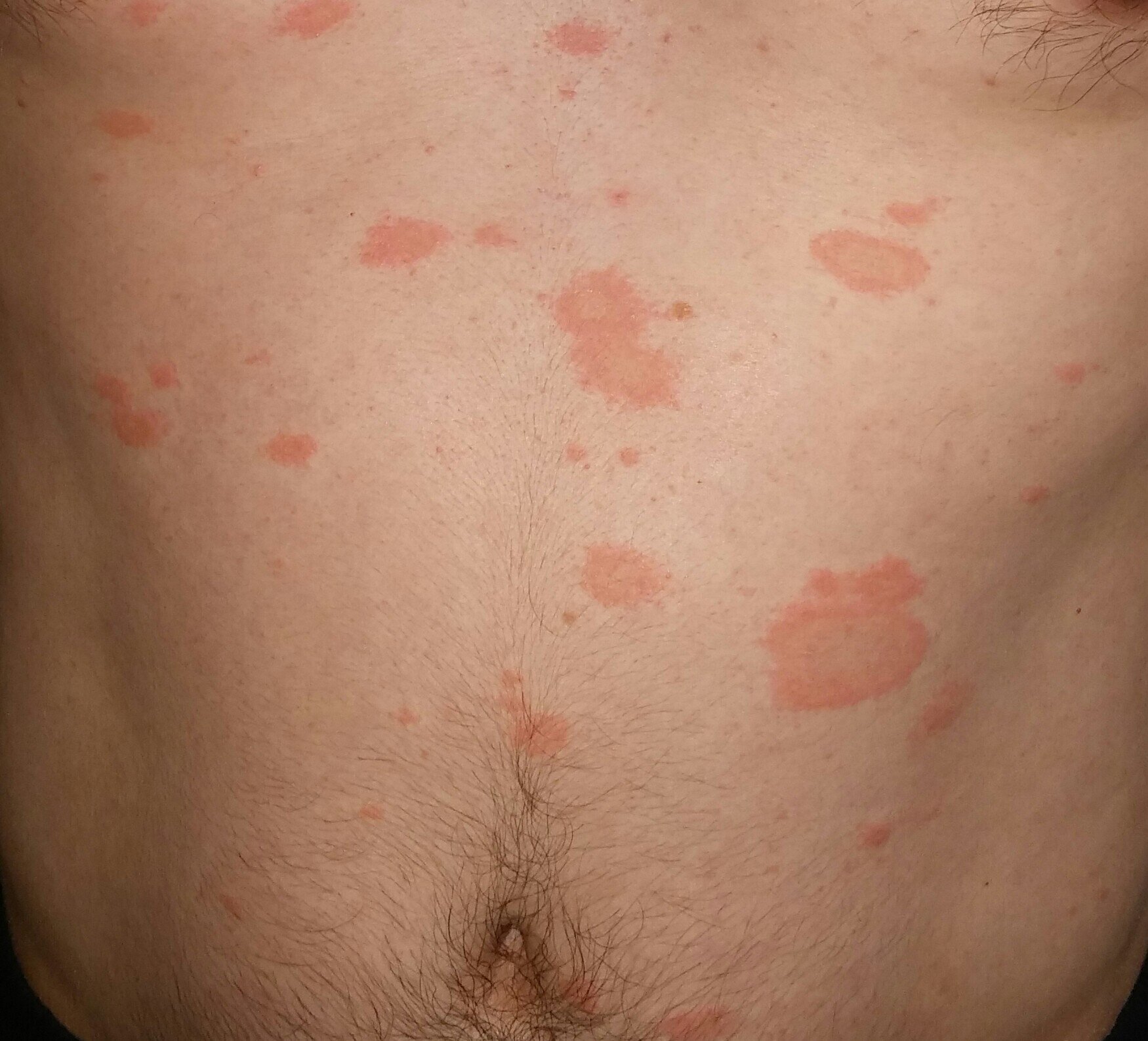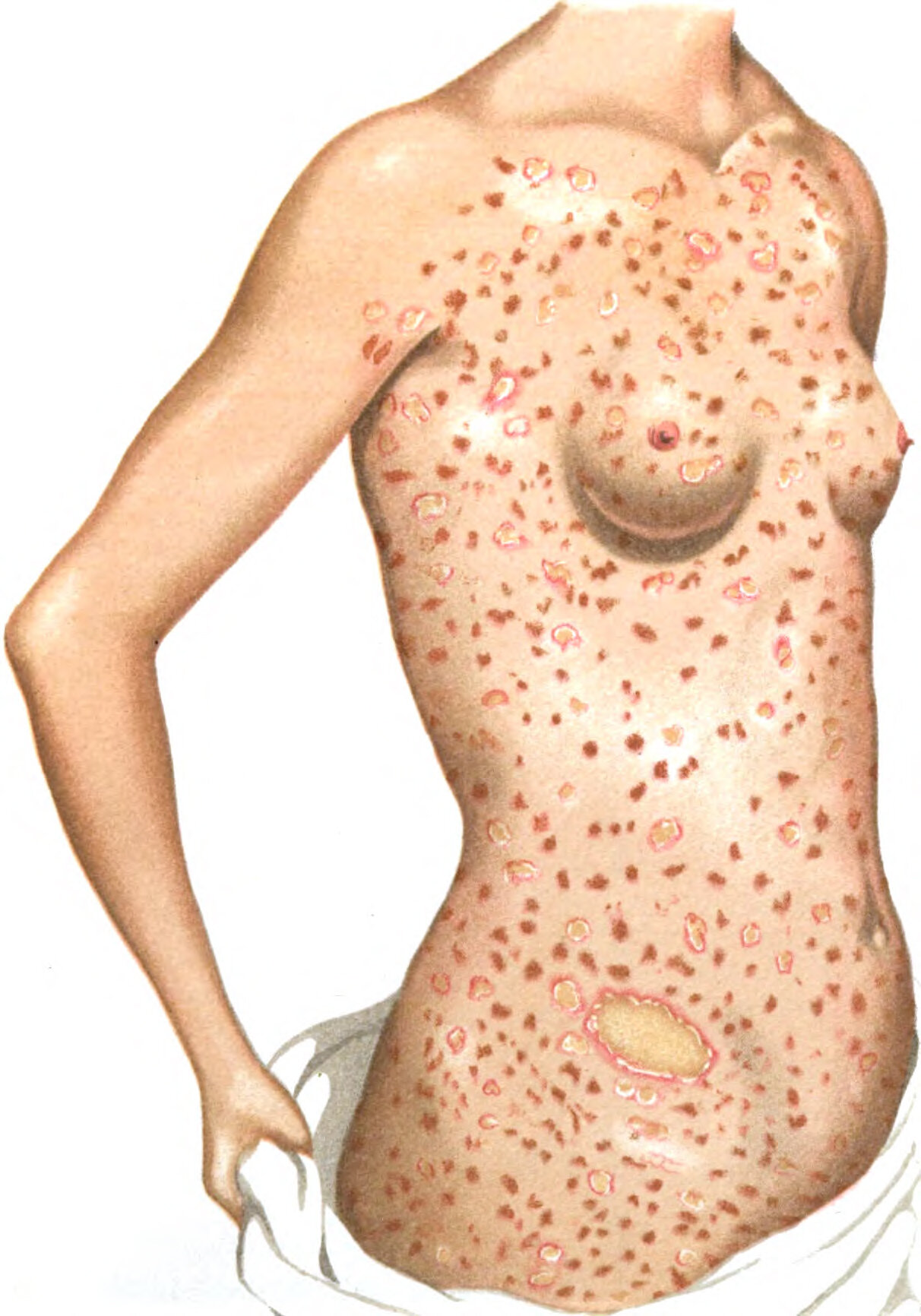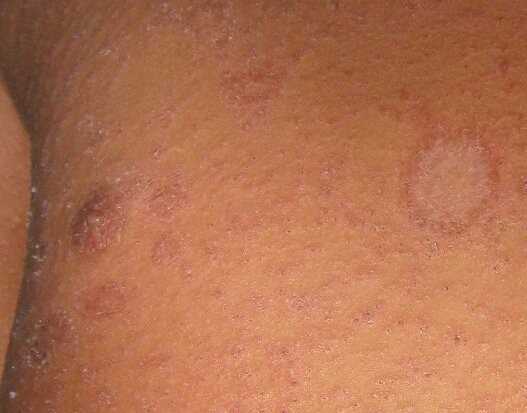Pityriasis rosea
Definition
Pityriasis rosea is a skin rash that is characterized by distinctive scaly, erythematous lesions.
Aetiology
It is thought to be a reaction to exposure to infection.
Risk population
Pityriasis rosea mainly affects older children and young adults (commonly between 10 and 35 years of age), and is more common in women than men.
Diagnosis
Discrete lesions are pink-red (salmon-coloured) or fawn-coloured, flat or slightly raised, circular or oval, typically 0.5–1 cm in diameter, and usually slightly scaly (scaling is usually confined to the edge of the lesion with central clearance).
The distribution of lesions is usually symmetrical.
Most lesions occur on the trunk (forming a 'Christmas tree' pattern on the upper back and a V-shape on the upper chest) and proximal limbs, with few distal to the mid-upper arm and mid-thigh.
The diagnosis is more likely if a 'herald patch' (an erythematous, slightly raised oval patch, 2–10 cm in diameter and with scale at the margin) appeared a few days or weeks before the generalized eruption. It usually occurs on the trunk but can occur anywhere on the body.
Images Courtesy of WikiMedia Commons
Differential Diagnosis
Guttate psoriasis
Discoid (nummular) eczema
Drug reactions
HIV seroconversion
Lichen planus
Pityriasis lichenoides
Pityriasis versicolor
Polymorphic eruption of pregnancy
Secondary syphilis
Tinea corporis (ringworm)
Management
For most people with pityriasis rosea, no treatment is required.
The rash may worsen before it resolves, with new crops of lesions continuing to appear for up to 6 weeks.
It will usually settle without treatment within 2–3 months, but may take up to 5 months to disappear.
After the rash has disappeared, there may be some hyperpigmentation or hypopigmentation of the affected skin for several months, but there should be no scarring.
For people with itch, an emollient or a mild or moderately-potent topical corticosteroid (depending on the severity of itch) may provide symptomatic relief.
A sedating oral antihistamine may be given at night if itching affects sleep.




